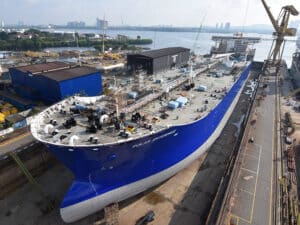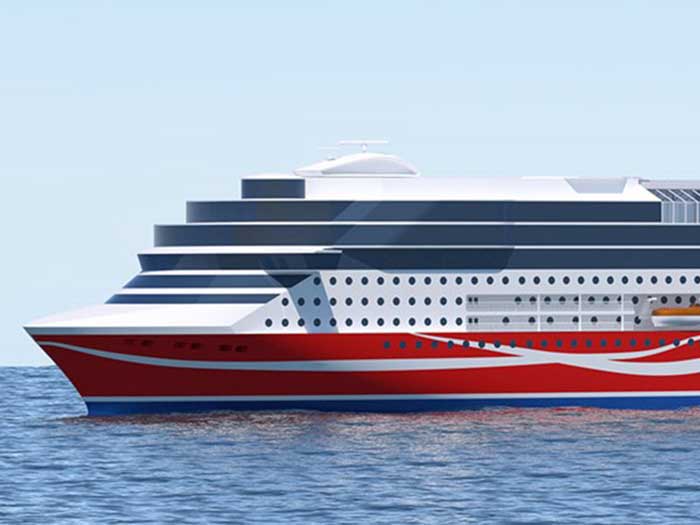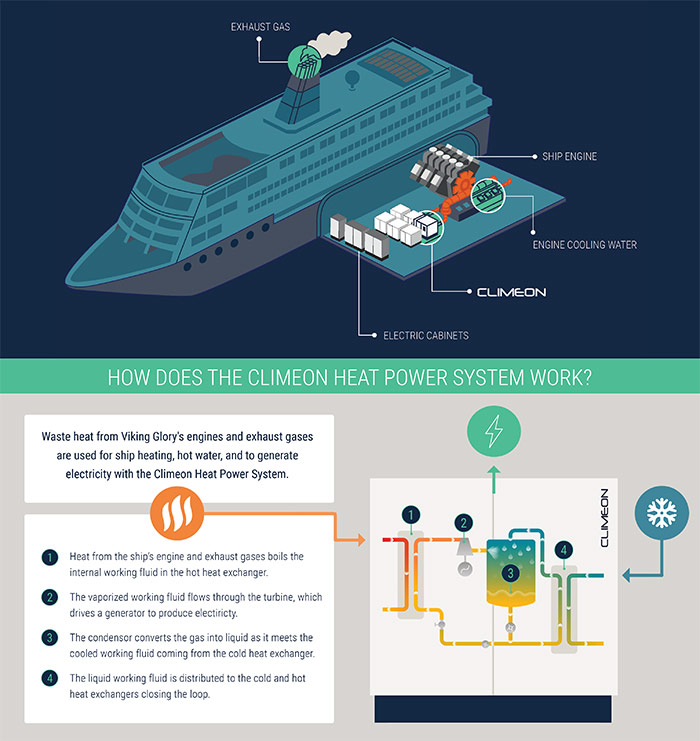
Viking Line says Climeon system will bring major CO2 emissions cuts
Written by Nick Blenkey
Viking Line says its newbuild cruise ferry will be one of world's most climate friendly vessels
Finland’s Viking Line has released some more details on the Climeon Heat Power System that will be installed in its newbuild cruise ferry, the 63,000 gt M/S Viking Glory, currently under construction at China’s Xiamen Shipbuilding.
According to Viking Line, Climeon’s system is expected to reduce CO2 emissions by about 4,000 tonnes a year.
The Climeon Heat Power System uses waste heat from the engines both to heat the vessel and to generate clean electricity. Viking Line will also be the first shipping company in the world to install Climeon’s steam turbines, which use waste heat from gases produced during the combustion process. All in all, the Heat Power modules and steam turbines will reduce CO2 emissions by at least 4,000 tonnes a year.
The steam turbines will be placed in service initially on Viking Glory but will be assessed for potential use on Viking Line’s six other vessels in the future.
“We are really proud of the confidence that Viking Line has placed in us and that they have chosen to be a pioneer in energy efficiency in the marine transport industry by installing both Heat Power modules and steam turbines from Climeon,” says Thomas Öström, Climeon’s chief executive officer. “Each unit can produce up to 150 kW, which is comparable to the amount of electricity needed to charge 250,000 mobile phones a day. Our estimate is that Viking Glory will reduce its CO2 emissions by about 4,000 tonnes a year with our new solution.”
Viking Line was the first shipping company in the world to invest in Climeon’s energy recovery system when the very first prototype developed for ships was installed on board Viking Grace. With the construction of Viking Glory, the decision was made to involve Climeon right from the start in the development work.
The Climeon Heat Power System in brief:
The energy recovery system converts waste heat from the vessel’s engines into electricity. To describe the whole process in simple terms: Engines need cooling water so that they do not overheat and seize up. When the cooling water passes through the engines, it becomes hotter, producing heat. Usually this waste heat is conducted out of the vessel so that the heat is lost. Using Climeon’s innovative system, that heat is converted into clean electricity.





